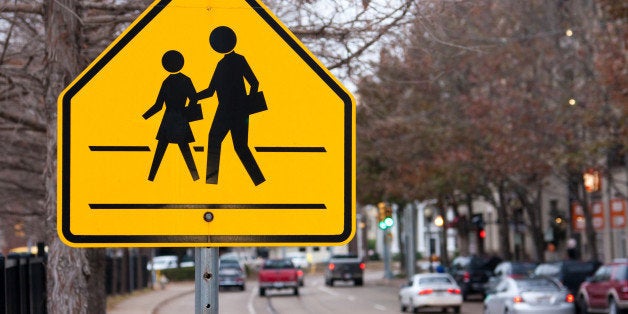
Active shooter drills make up a large part of our national dialogue on school shooting prevention, but they really only prepare people for after such a tragic event has actually begun. That said, they are an important front line of defense, but can never prevent a school shooting as by definition they train school personnel, bystanders, and students to be prepared for when it starts. Thus, it is important to ask, before the next fatal school shooting occurs, if our interventions to prevent it will reach far enough.
Many districts, schools, and the entities or associations above them, already subscribe to anti-bullying programs and emphasize a student's-first approach to developing and maintaining good relationships with students. These are important, no doubt. Still, distressed individuals may not always be encouraged by the intentional presence of positive school relationships, but instead create their own walls of resistance. It is as the adage says; those who need the most help may be the hardest to help.
As we start to think about school-based prevention, let's remember that all concerned citizens form an integral part of this equation. Thus, we cannot shirk that the responsibility for school shootings is actually on us as a nation, as a culture, and as a people. It is focal for us to find out all we can do within our sphere of influence and family network.
President Obama wisely said after the last fatal school shooting in Troutdale, Oregon last June that no other advanced, developed nation would ever put up what has become commonplace in America. And it is all too common. In the decade from 2000-2009, 38 fatal school shootings took the lives of over 100 young people and adults. Shockingly, in just the partial decade from 2010 to the present time, there have been 43 fatal events taking over another 100 more precious lives (for list, visit my website, www.endingschoolshootings.org).
For those who might wonder if fatal school shootings are on the uptick, the previous statistic suggests that they are. But here is a much, much more important perspective to take: even if there was only one school shooting in America, it is one too many. We cannot keep talking numbers and lose sight of our students, as this will not nurture the national dialogue we need nor the preventions aimed at therein.
I've researched school shootings episodically and intensively since Columbine. Last winter, a fatal shooting in Centennial Colorado made me cry out, "Enough," and I finally got down to writing about a national plan for the prevention of future school shootings. Last summer, I visited Isla Vista and walked the same streets where that tragedy occurred. I also interviewed the kin of a long-ago school tragedy - actually the worst of its kind in America. Back in 1927, a deranged school treasurer bombed his school and killed 45 innocent people in the small town of Bath, Michigan -- it became known as the Bath School Disaster. I am so thankful for the insights of three children of the survivors of that tragedy -- these interviews underscored that the wounds of school violence last for generations. In fact, they do not really go away completely, ever. These examples underscore that we need a nationwide plan for prevention.
A Comprehensive Threat Assessment - As we discuss prevention programs, we need to first look at indicators elicited by the perpetrators of major school shootings. The FBI's school threat assessment report by Mary Ellen O'Toole (1999) details these motivations and how each school can perform threat assessments. The report cites two primary motivations which occurred in a majority of school shooters. First, 75% of them were bullied, persecuted, or otherwise threatened by others, and second, 61% were motivated by a desire for revenge. In essence, these primary indicators highlight a relational weakness among school shooters -- not in capacity necessarily but in their daily experience. Also, when a school conducts its own threat assessment, it can be a moving target and potentially biased; as a result, schools and districts should perform an equity audit to deconstruct how discrimination or privilege function in each setting.
Benefits of Adult Relationships - What might also help out is a relationship officer, part-time or full-time, in every school in America. These could be easily funded in areas across the country with that capacity. For all other schools, we need to consider educational donors across this land as well as potential state and federal dollars that could supplement some of this cost for schools that do not have as much financial capacity, while volunteers could also increase what they already do. These dedicated relationships-building opportunities would extend the reach of anti-bullying programs and the fine work of schools and district leaders. Also, active shooter drills are indeed helpful once an event starts, but my argument again is that we will need interventions beforehand as well.
Strengths Based Supports - Lastly, and complementing a school's effective threat assessment, we have a large opportunity ahead that we can provide a new type of supports to distressed students: strengths-based supports. These are already used with business leaders. If school leaders actively seek to build strengths in each distressed student, rather than just working in corrective areas, this can help propel these students in positive directions. And we might give a more optimistic focus towards the circumstances that trouble each young person.
I recognize that these ideas may seem unwieldy at first, indeed; the beginnings of all new initiatives feel that way. Yet in this process we can start and nurture a national dialogue on prevention and learn how to reach into all schools through it. Also, we might get the ear of the U.S. Department of Education so as to connect with and extend what they are doing. But we must remember, if we do create a comprehensive, national plan for school shooting prevention in all schools in America, we may be critiqued and criticized as we improve and adapt it. However, if we put off making a comprehensive plan and still hope that nothing worse happens in schools, our inactivity is what Albert Einstein defined as insanity.
A robust nationwide school shooting prevention plan that is the daily experience in all of our nation's 99,000 schools needs to become a reality. We owe it to the families of the over 200 Americans since the year 2000 who died in the service and experience of the American educational system to create a national plan that honors them. The wisdom, compassion, and collaborative voice of all of us in the spirit of prevention will be needed to carry this plan out.
We should envision James Montgomery Flagg's 1916 sketch of Uncle Sam pointing at each of us. Therein, we could hear the words that our country wants us all to help prevent the next crisis in American schools. In either case, our future truly depends on us.
Dr. Jonathan Doll has extensively researched the topic of school shootings and prevention. His work includes dissertation research on school dropout, early warning signs, and the in-press book, Ending School Shootings. He can be reached at Jonathan@endingschoolshootings.org.
The author's opinions are his own.
